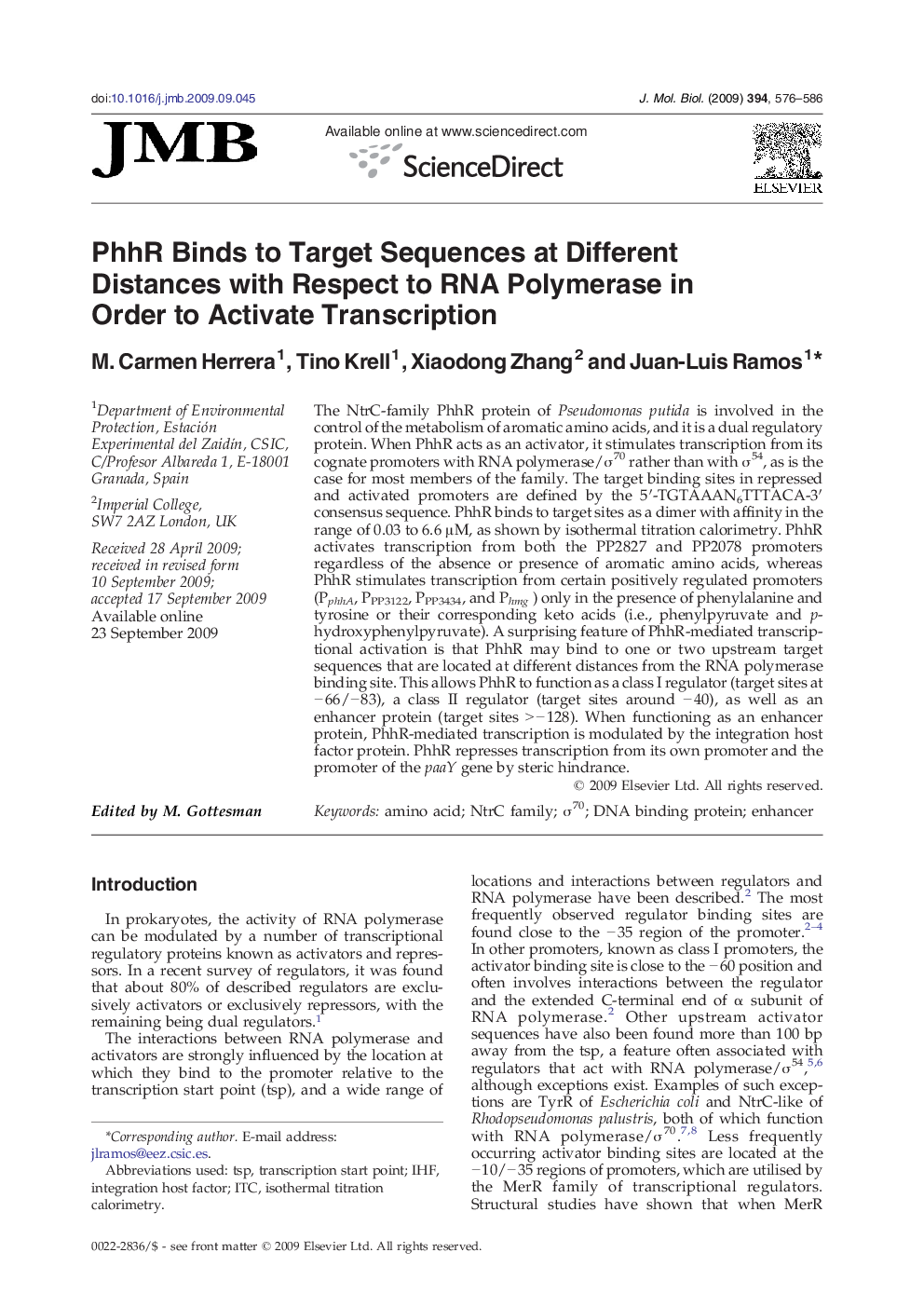| کد مقاله | کد نشریه | سال انتشار | مقاله انگلیسی | نسخه تمام متن |
|---|---|---|---|---|
| 2186256 | 1096043 | 2009 | 11 صفحه PDF | دانلود رایگان |

The NtrC-family PhhR protein of Pseudomonas putida is involved in the control of the metabolism of aromatic amino acids, and it is a dual regulatory protein. When PhhR acts as an activator, it stimulates transcription from its cognate promoters with RNA polymerase/σ70 rather than with σ54, as is the case for most members of the family. The target binding sites in repressed and activated promoters are defined by the 5′-TGTAAAN6TTTACA-3′ consensus sequence. PhhR binds to target sites as a dimer with affinity in the range of 0.03 to 6.6 μM, as shown by isothermal titration calorimetry. PhhR activates transcription from both the PP2827 and PP2078 promoters regardless of the absence or presence of aromatic amino acids, whereas PhhR stimulates transcription from certain positively regulated promoters (PphhA, PPP3122, PPP3434, and Phmg ) only in the presence of phenylalanine and tyrosine or their corresponding keto acids (i.e., phenylpyruvate and p-hydroxyphenylpyruvate). A surprising feature of PhhR-mediated transcriptional activation is that PhhR may bind to one or two upstream target sequences that are located at different distances from the RNA polymerase binding site. This allows PhhR to function as a class I regulator (target sites at − 66/− 83), a class II regulator (target sites around − 40), as well as an enhancer protein (target sites > − 128). When functioning as an enhancer protein, PhhR-mediated transcription is modulated by the integration host factor protein. PhhR represses transcription from its own promoter and the promoter of the paaY gene by steric hindrance.
Journal: Journal of Molecular Biology - Volume 394, Issue 3, 4 December 2009, Pages 576–586